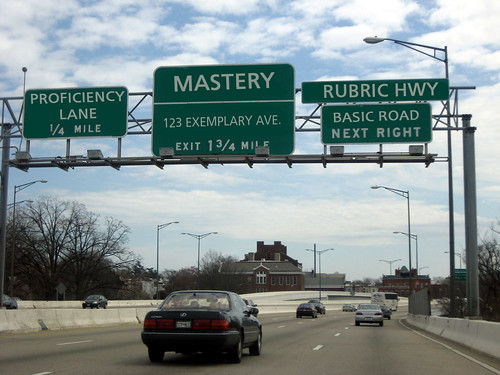There are lots of ways to teach questioning strategies, but to find an engaging method to practice those skills is a little more of a challenge. Sure, they can practice with the kids in their class, but at some point, that becomes monotonous. Why not use the technology you have on any device and reach outside to a global audience willing to help you with those skills? Mystery Skype is one way to do that. Check out the video below of how some elementary kids practice their questioning skills. This can be adjusted to all ages, and I am always ready to help connect you with someone around the world to get you started with your first experience with this. For this and other ideas on using Skype with your kids, check out Skype in Education.
Category Archives: PBL Tools
Using Rubrics to Assess Critical Thinking
It’s an on-going concern that we cannot adequately/accurately assess critical thinking in our students. Buck Institute has a new book out titled “PBL for 21st Century Success: Teaching Critical Thinking, Collaboration, Communication, Creativity” that spends part of its pages in this area. As the leaders in PBL training, I respect their content and what they have to offer educators.
Take a look at this blog post where John Larmer, BIE Director of Product Development, shares insight into using the rubrics listed below. Keep in mind, allowing voice and choice in the creation of the final rubric is the best answer to holding students accountable to the expected levels of proficiency. They know what the expectations are because they helped CREATE them. When you’re having to respond to a question about the subjective nature of PBL (and similar) assessment, this is your best defense.
STEMbite for Your Classroom
Video is a great way to engage your students in the learning process. It’s even better when the learning is about every day items they can find around them. STEMbites does the work for you. I bet you can find some creative ways to use their content either as warm-ups for the day’s content, or even use it as an entry event for the PBL work you have planned.
Dive in. Enjoy. Be sure you Subscribe to their YouTube channel to get the latest updates.
Nature is so amazing… No, seriously, it is crazy! To understand just how incredible our world is, you need to pull back the curtain and see all the science and math that underpins every part of our day-to-day lives.
With STEMbite, you can explore the world like like never before – through the eyes of an enthusiastic young teacher. Subscribe to this channel for engaging, bite-size lessons from a unique first-person perspective through Google Glass.
15 Tools For Better Project-Based Learning
Project-Based Learning is a 21st century approach to learning that acts both as a curriculum and instruction tool, as well as a new way for students to think about school. Rather than strictly academic lessons and units, real-world problems can be solved, and students gain experience with long-term management of the learning process, and the possibility of self-direction.
Project-Based Learning allows naturally embedding of “school” in authentic environments whether those are digital or physical. It is a way of learning that is as much about the process as the project, allowing for the seamless integration of technology, and the inclusion of digital and social media to solve relevant personal and social challenges.
Read more (including the list of suggested tools) from TeachThought HERE.
Driving Questions From the Real World

I got an email from the Bard recently that supports a very strong point we’ve heard in our PBL training with BIE. We should be pulling our lessons and driving questions from real world events. Suzanne shared an email she receives as part of the NY Times Learning Network. Take some time and check the site out. You will find lesson ideas for all subject areas. It is well worth it, and the best part is that it can come to your email with top headlines selected with a focus on classroom, real world learning. Just look for the box in the right sidebar that says “The Learning Network Email Newsletter” and sign up there.
And for good measure, check out Will Richardson’s article on MindShift, “Should we connect school life to real life?”
Thanks for the email, Suzanne.
Building a Culture of Hiring
 Photo Credit: muffytyrone
Photo Credit: muffytyrone
You’re fired! Wherever project-based learning is introduced, students will come to a point where their teams don’t work together, can’t work together or won’t work together.
Tim Kubik, a BIE National Faculty Member, shares his thoughts around the idea of what happens when groups just don’t work out. Is it better to be proactive or reactive? Be sure to read his great blog post here.
Easy PBL Planning Tool
BIE has done a great job of providing an online project planning tool for you to use. Watch the video below to see just how useful this tool will be in your classroom.

